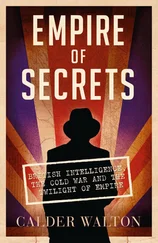Steven Kent - The Clone Empire
Здесь есть возможность читать онлайн «Steven Kent - The Clone Empire» весь текст электронной книги совершенно бесплатно (целиком полную версию без сокращений). В некоторых случаях можно слушать аудио, скачать через торрент в формате fb2 и присутствует краткое содержание. Жанр: Боевая фантастика, на английском языке. Описание произведения, (предисловие) а так же отзывы посетителей доступны на портале библиотеки ЛибКат.
- Название:The Clone Empire
- Автор:
- Жанр:
- Год:неизвестен
- ISBN:нет данных
- Рейтинг книги:4 / 5. Голосов: 1
-
Избранное:Добавить в избранное
- Отзывы:
-
Ваша оценка:
- 80
- 1
- 2
- 3
- 4
- 5
The Clone Empire: краткое содержание, описание и аннотация
Предлагаем к чтению аннотацию, описание, краткое содержание или предисловие (зависит от того, что написал сам автор книги «The Clone Empire»). Если вы не нашли необходимую информацию о книге — напишите в комментариях, мы постараемся отыскать её.
The Clone Empire — читать онлайн бесплатно полную книгу (весь текст) целиком
Ниже представлен текст книги, разбитый по страницам. Система сохранения места последней прочитанной страницы, позволяет с удобством читать онлайн бесплатно книгу «The Clone Empire», без необходимости каждый раз заново искать на чём Вы остановились. Поставьте закладку, и сможете в любой момент перейти на страницу, на которой закончили чтение.
Интервал:
Закладка:
I told Hollingsworth to muster a single company. “I want them dressed in combat armor and loaded on trucks in five minutes.”
“Won’t we need more men?” Hollingsworth asked. “What if—”
“Put the rest of the base on alert,” I said.
“But what if—”
“You have your orders,” I said.
“Yes, sir,” Hollingsworth said, and signed off. The call to arms sounded a few seconds later. By the time it did, I had my bodysuit on and was fastening my armor.
I thought about the armory. As a show of respect for Doctorow and his government, I had decided against posting guards around the site. Perhaps I had made a mistake. My show of respect, however, only went so far. I might not have posted guards around the caved-in armory, but I’d had my engineers install a discreet security system around the grounds.
I grabbed my M27, left my particle-beam pistol in my locker, and headed out the door.
Sirens wailed. Across the grounds, men in fatigues rushed out of lit barracks, but most of the barracks were dark. Originally built to house twenty-five thousand soldiers, Fort Sebastian was now home to a mere thirty-two hundred men: one thousand naval engineers and twenty-two hundred combat Marines.
Four troop carriers lined up near the gate, their engines purring. Hollingsworth waited beside the first truck, already in his armor. Moments after I arrived, two lines of men in dark green combat armor formed, and a pair of sergeants shepherded the men onto the trucks. Hollingsworth and I rode with the men in the back of the first carrier.
“Has your patrol reported in?” I asked Hollingsworth, as we settled onto the bench at the back of the truck. With twenty-five Marines in camouflaged armor around us, the back of the transport looked like a forest.
“No response, sir,” Hollingsworth said. “The bastards must have hit them.”
“Must have,” I said, though I had my doubts. Doctorow’s militia could not afford to go balls out with us, and they knew it. They outnumbered us, but they did not have the stomach for collateral damage.
I put on my helmet and tried to listen in on my men’s conversations over the interLink, but heard nothing. For a moment I thought something might be wrong with my equipment. I removed my helmet and stared into it. I tapped on the visor, knowing that tapping on the glass would be no more effective at repairing microcircuitry than patting a man on the back would be at removing a brain tumor.
“I’m not Linking,” Hollingsworth said. “It’s like my helmet went deaf.”
As I stared into my helmet, the truck slowed to a stop. A moment later, the sea of men in front of me parted as our driver called out to me from the back of the truck. As I pushed through the crowd, I noticed that all of the men had removed their helmets.
“What is it?” I asked.
“General, I tried to contact you over the interLink, sir, but I could not get a signal.”
“Somebody is jamming the signal,” I said, trying to sound as if I had known that all along.
“Yes, sir,” said the driver. “There’s an overturned jeep about a quarter mile up the road from here.”
“One of ours?” I asked.
“Maybe we should send some men to have a look at it,” Hollingsworth suggested.
“See to it,” I said, deciding to play things safe even as my instincts told me not to worry.
Hollingsworth sent a fire team in to investigate. The team included a rifleman, an automatic rifleman, a grenadier, and a team leader. I watched them as they went up the road, knowing that the time had come to make a tactical decision. I needed to choose between communication and equipment. If we wore our helmets, we would not be able to communicate; but we would have radar, sonar, and optical lenses to provide us a tactical edge. With our helmets off, we would be able to speak; but we would be blind to snipers and traps.
Communications or security? I asked myself. I opted for security.
Using the heat-vision lenses in my visor, I scanned the road ahead and saw no signs of people other than the men I had just sent out. I pulled off my helmet and barked out orders.
“We’re hiking in from here,” I told Hollingsworth and the noncoms who had gathered around me. “Tell your men to stay in a tight formation and keep their helmets on until we give the signal to remove them.
“There may be snipers out there,” I said. “If there are, I want to see them before they hit us.”
As we fanned out, the men we sent to investigate the jeep were already on their way back. We sent four men, but eight men returned.
“What happened?” I asked the patrol leader.
“They hit the jeep,” the man said.
“Was anybody hurt?”
“The jeep’s in bad shape,” one of them said. With their jeep destroyed and the interLink down, the men in Hollingsworth’s original patrol could neither proceed nor call for help. Their only option had been to dig in and wait for backup.
The terrain was mostly flat, though much of it was buried under mounds of debris. We secured the area quickly, then moved forward.
We reached the jeep. It lay on its side, all of its wheels shredded. Somebody had gouged a two-inch-deep trench across the road, then filled it with spikes.
I knelt beside the spikes and tried to pull one out. They were wedged in tightly. It took a little work, but I managed to pry one out of the ground.
“Bastards,” Hollingsworth muttered.
Whoever set this trap wanted to get his point across without starting a war, I thought. Placing a mine would have been easier. It would also have been lethal.
“Do you think the militia did this?” asked Hollingsworth.
“Why don’t you ask your pal Doctorow,” I said. “I hear you two are tight.”
Hollingsworth heard me, but he did not respond. He stood still and silent for a few seconds, then excused himself to go check on his men. The stupid son of a bitch should have known it would get back to me.
I stood and looked off across the landscape. If the militia had time to set these spikes, they’d had time to set up more surprises. None of the traps would be lethal, just something to get our attention.
The street leading to the government compound was clear, but the ground on either side of the road was knee-deep in the debris of buildings destroyed long ago. Two-thirds of a mile ahead of us, the abandoned government complex rose out of the ground like small buttes in a desert. In the middle of the buildings, a wide gap marked the target—the building we had knocked down during our battle with the Unified Authority.
There might be bombs ahead. There might be snipers.
“See if you can contact Fort Sebastian,” I told Hollingsworth though I knew it was useless. “I want to know if they’ve seen anything.”
A moment later, he said, “Nothing, sir.”
“Maybe we should send a man back to tell them what’s going on,” Hollingsworth suggested.
It was a good idea but not necessary. “Not yet,” I said. “Not until I know what’s out here.”
“Yes, sir.”
It was just after 03:00. The sky was dark except for the stars and a crescent of moon so thin it looked like it had been made with a single stroke of a pen. I put on my helmet and searched the area using night-for-day lenses, then I switched to heat vision. On the off chance that the locals had snipers hiding along the side of the road, I hoped to spot their heat signatures. The lenses showed me nothing but a barren landscape giving off very little heat.
As I thought about it, I became more convinced that Doctorow would not sanction a firefight. He would not send snipers, but he might have had his demolitions experts set some traps. Doctorow had a couple of retired Navy SEALs among his troops. They had top-notch demolitions training and field experience.
Читать дальшеИнтервал:
Закладка:
Похожие книги на «The Clone Empire»
Представляем Вашему вниманию похожие книги на «The Clone Empire» списком для выбора. Мы отобрали схожую по названию и смыслу литературу в надежде предоставить читателям больше вариантов отыскать новые, интересные, ещё непрочитанные произведения.
Обсуждение, отзывы о книге «The Clone Empire» и просто собственные мнения читателей. Оставьте ваши комментарии, напишите, что Вы думаете о произведении, его смысле или главных героях. Укажите что конкретно понравилось, а что нет, и почему Вы так считаете.












